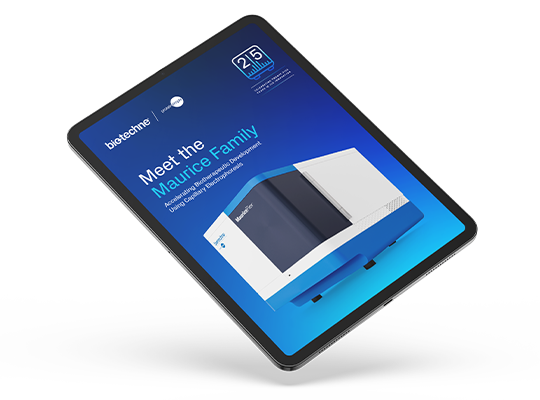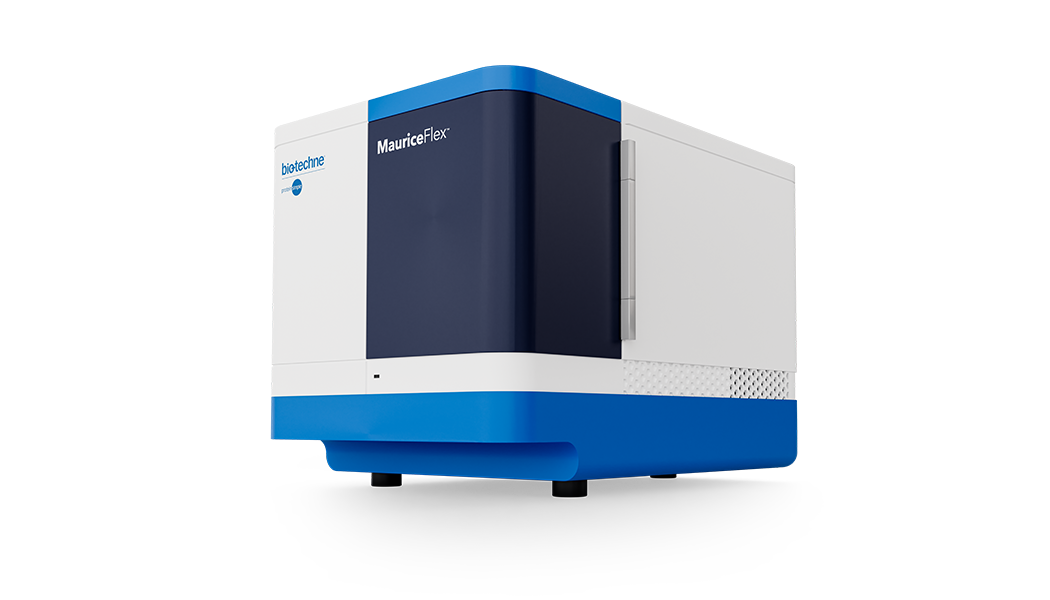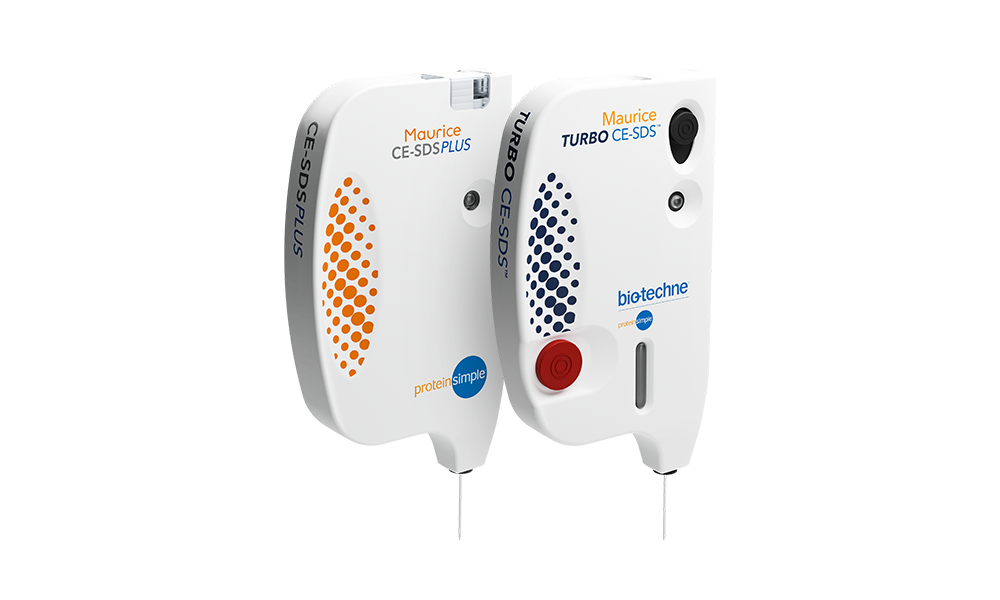In 1999, the first imaged capillary electrophoresis platform (iCE) was introduced and over the last 25 years this technology has evolved to revolutionize biotherapeutic charge heterogeneity and size analysis. To celebrate this incredible milestone, hear from a co-inventor, watch our virtual event, sign up for our eNewsletter, enter a fun raffle, and more!
Where it all began
Learn about the history of the iCE technology and how it developed into a key analytical tool for biomolecular charge and size separation for biotherapeutics.
Hear from Dr. Jiqi Wu. co-inventor of the first iCE platfrom, on the origin and evolution of this innovative technology. His pioneering work led to the development of the imaged capillary electrophoresis (iCE) platforms that changed the way protein charge heterogeneity is analyzed in protein chemistry labs, especially biopharmaceutical industry labs. Learn how iCE technology can revolutionize your biotherapeutic charge variant analysis below.
Stay on top of our latest news & events
Sign up to receive our quarterly eNewsletter, hear from users about innovation applications, or join us at an upcoming meeting.
Go Greener – and Faster - with CE Technology
Using ion exchange chromatography or SDS-PAGE techniques in your lab? See how replacing these methods with a Maurice platform not only saves time but can help your lab to significantly reduce hazardous waste – without similar or better resolution!
IEX vs. icIEF Workflows for Routine Analysis
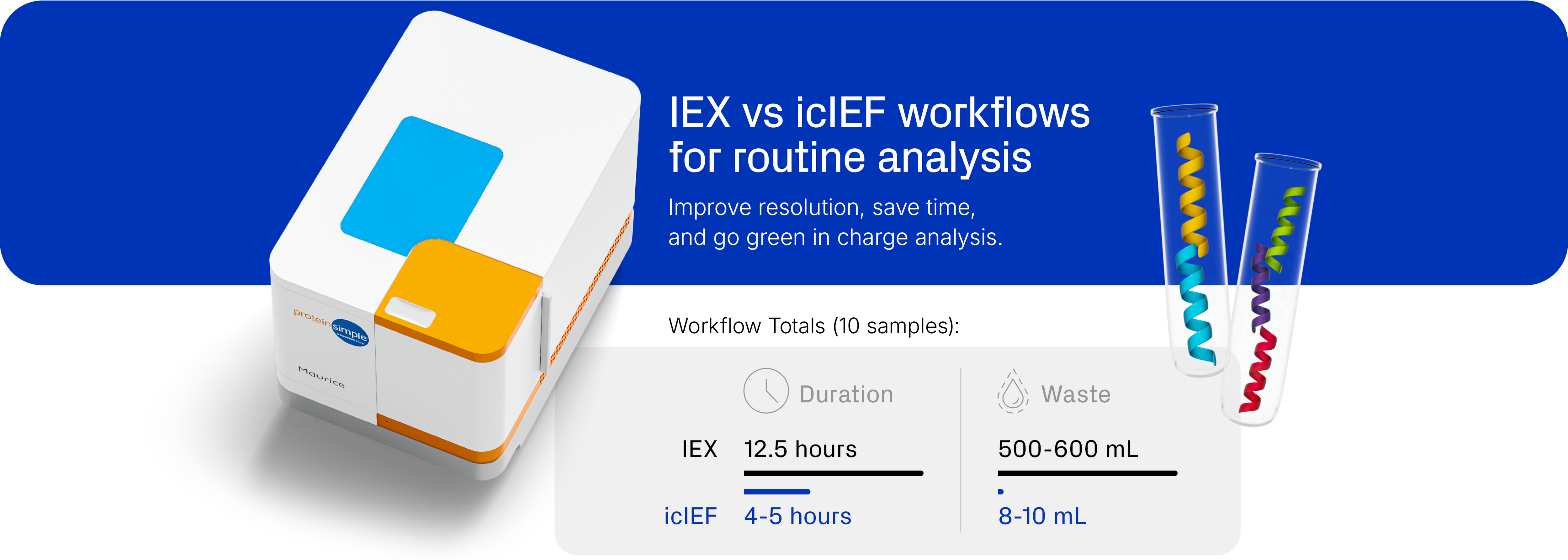
For routine charge variant analysis, icIEF provides better speed and resolution, with up to 60% in time savings and a 97-98% reduction in the hazardous waste generated compared to ion exchange chromatography (IEX) methods.
SDS-PAGE vs. CE-SDS
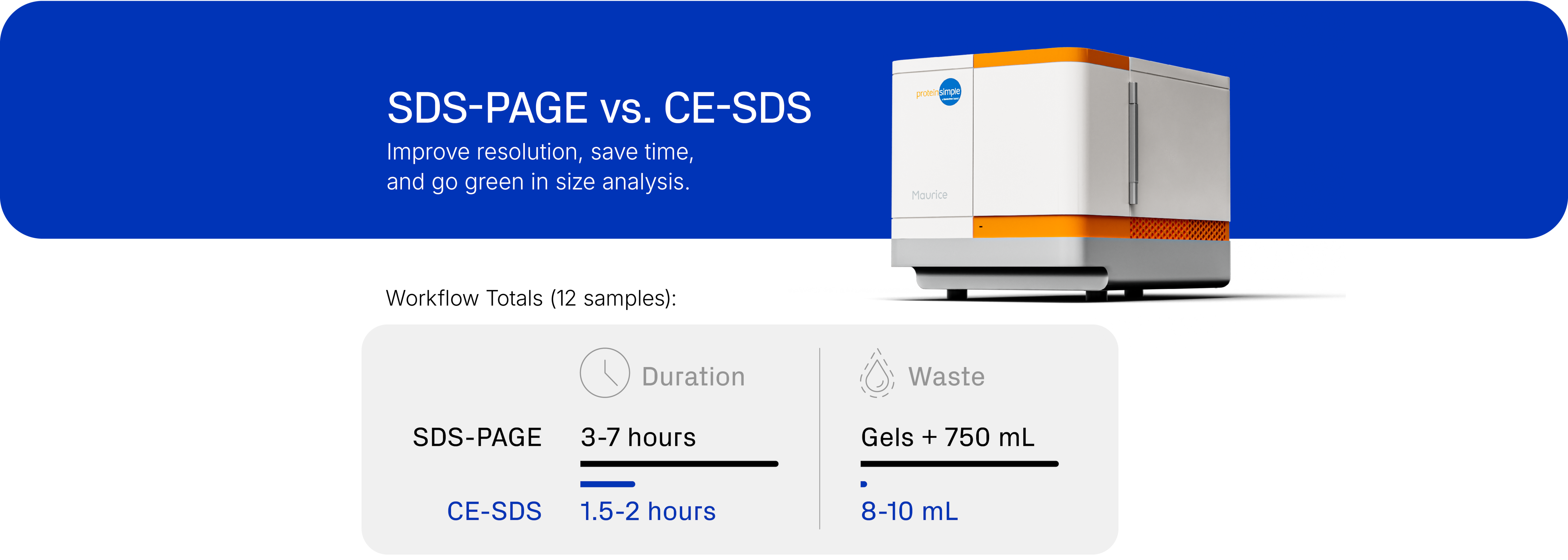
For routine protein size analysis, the CE-SDS method provides better speed and resolution, with 50-85% in time savings and a >85% reduction in the hazardous reagent waste generated compared to SDS-PAGE methods.
Want to learn about our newest product innovations?
Watch this talk from Dr. Johnson to view the exciting results of a beta tester for the newly launched Maurice icIEF 400 cartridge. This cartridge doubles the injections from 200 to 400 and increases the batch limit from 25 to 40, boosting productivity while reducing costs. As iCE3 instruments will be discontinued in 2029, the icIEF400 cartridge eases the transition to the Maurice and MauriceFlex™ platforms, accommodating higher batch and sample numbers for high throughput applications.
Dr. Tyagi provides a hands-on tour of the benchtop Maurice and MauriceFlex instruments. With five different self-contained cartridges to chose from to obtain streamlined protein charge or size analysis, she demonstrates how these plug-and-play systems reduce the amount of time and labor required to run experiments, while simultaneously ensuring data consistency.
Hear from our users.
Listen to Dr. Carillo on how she is using the MauriceFlex for charge variant characterization at NIBRT ((National Institute for Bioprocessing Research and Training), whose mission is to address the important needs of the biopharmaceutical manufacturing industry in Ireland and internationally, and ultimately to help deliver biologic-based medicines to people who need them.
"Adding fractionation capabilities can really help in simplifying the workflow to assess peak identity, especially if paired with state-of-the-art mass spectrometry techniques. On top of this, the experience of working with the Bio-Techne family has been a pleasure so far and they helped us throughout our first work, beyond the training aspect of the installation." Dr. Sara Carillo, Bioanalytical Research Lead, NIBRT


